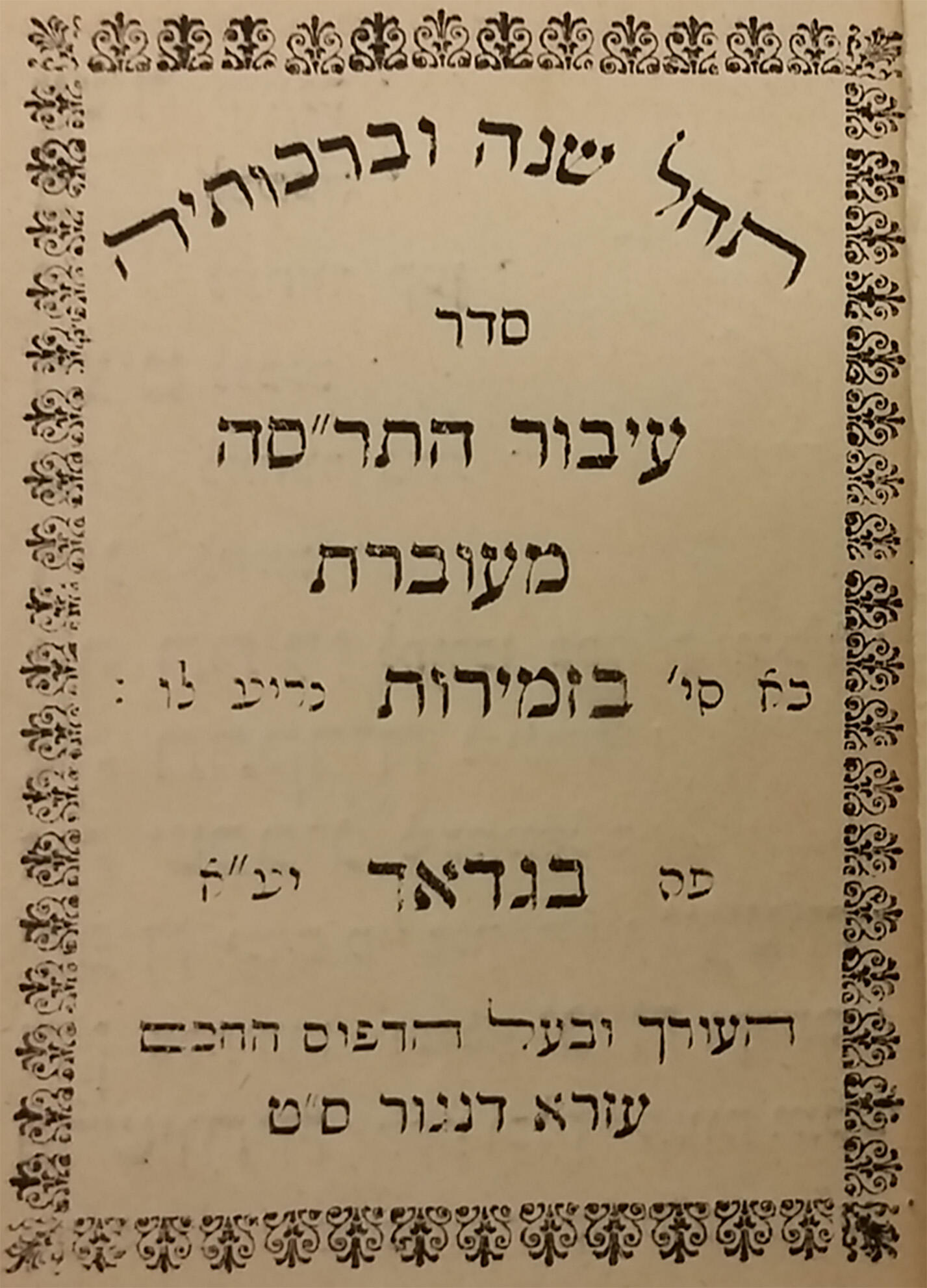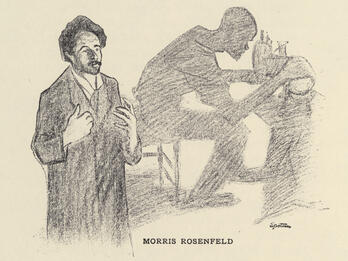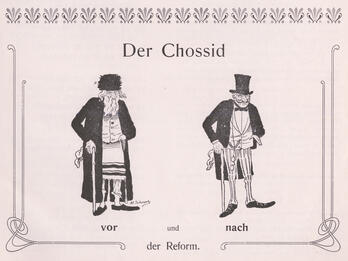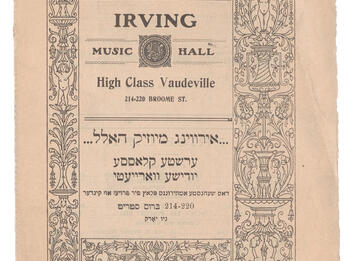Calendar for the Year 5665, an Intercalated Year
Its sign is זש״ה1
It is year 2 of the Sabbatical cycle
year 3 of the small lunar cycle 299
year 9 of the large solar cycle 203
year 1837 [sic] of the Destruction of the Temple, may it be built and established speedily in our days, amen
year 1904/5 of the Christians
year 1322/3 of the Muslims
It has 385 days, the sign for which is רצון יריאו יש״ה2
It has 55 weeks, [as in] ופרצת ימ״ה וקדמה3
Its weekly double-portions are Ḥukkat and Balak, Matot and Masei, Nitzavim and Vayeleḥ. The sign is ח״ב ממ״נו4
Learn an important rule: an hour is 1080 parts, and every 18 parts are one minute.
Advertisement
We announce to the esteemed public that, God willing, a complete siddur will soon be completed in our printing house, a small and pleasant book arranged in accordance with the requirements of the customs of Baghdad and surrounding areas, and free from errors. We put down in it praises for Shabbat and supplications for the four fasts for the convenience of the readers. Also included are the complete afternoon and evening prayers for weekdays and Sabbath, the afternoon and evening for the three Festivals and interim festival days, the festival kiddush, and the seven exalted guests for Sukkot. Everything is on high quality paper, in a splendid type, and available at a modest price. All those wishing [to obtain a copy] should turn to the direction of our printing house.
Baghdad. Today, the eve of Rosh Ḥodesh Elul, 5664
Ezra [ben] Reuven Dangur
Notes
[This means that Rosh Hashanah is on Saturday (ז for day 7), Ḥeshvan and Kislev are both 30 days long (ש for שלמים) and Passover is on Thursday (ה for day 5).—Trans.]
[Psalm 145:19. The numerical value of the word יעש״ה in this verse is 385, the same as the number of days in the year.—Trans.]
[Genesis 28:14. The numerical value of the word ימה is 55, the same as the number of weeks in the year.—Trans.]
[This sign is made up of the initial letters in the titles of the six weekly portions in question, which are both read on that Sabbath as one combined portion.—Trans.]
Credits
Ezra Dangur, Ta'el shanah u-virkhotehah: Seder ‘ibur 1904/05 me‘uberet [Calendar for the Year 5665, an Intercalated Year] (Baghdad: Ezra Dangur, 1904), n.p.
Published in: The Posen Library of Jewish Culture and Civilization, vol. 7.









